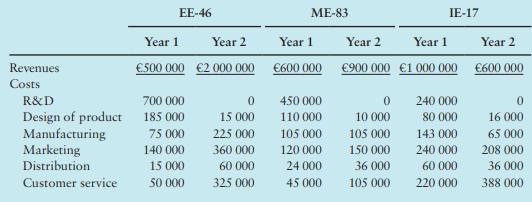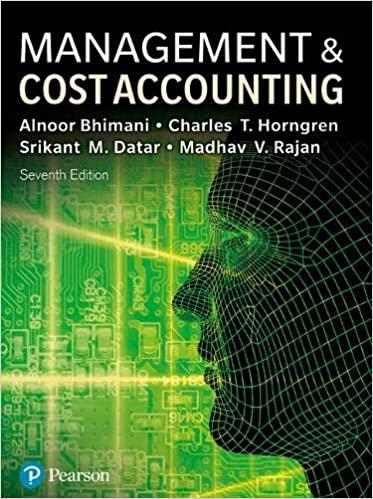Decision Support Systems (DSS) is examining the profitability and pricing policies of its software division. The DSS
Question:
Decision Support Systems (DSS) is examining the profitability and pricing policies of its software division. The DSS software division develops software packages for engineers. DSS has collected data on three of its more recent packages:
● EE-46: package for electrical engineers
● ME-83: package for mechanical engineers
● IE-17: package for industrial engineers.
Summary details on each package over their two-year ‘cradle-to-grave’ product lives are as follows:

Assume that no stock remains on hand at the end of year 2.
DSS is deciding which product lines to emphasise in its software division. In the past two years, the profitability of this division has been mediocre. DSS is particularly concerned with the increase in R&D costs in several of its divisions. An analyst at the software division pointed out that for one of its most recent packages (IE-17), major efforts had been made to cut back R&D costs.
Last week Kari Pystynen, the software division manager, attended a seminar on product life-cycle management. The topic of life-cycle reporting was discussed. Kari decides to use this approach in her own division. She collects the following life-cycle revenue and cost information for the EE-46, ME-83 and IE-17 packages:

Required
1. How does a product life-cycle income statement differ from an income statement that is calendar-based? What are the benefits of using a product life-cycle reporting format?
2. Present a product life-cycle income statement for each software package. Which package is the most profitable, and which is the least profitable?
3. How do the three software packages differ in their cost structure (the percentage of total costs in each cost category)?
Step by Step Answer:

Management And Cost Accounting
ISBN: 9781292232669
7th Edition
Authors: Alnoor Bhimani, Srikant M. Datar, Charles T. Horngren, Madhav V. Rajan





